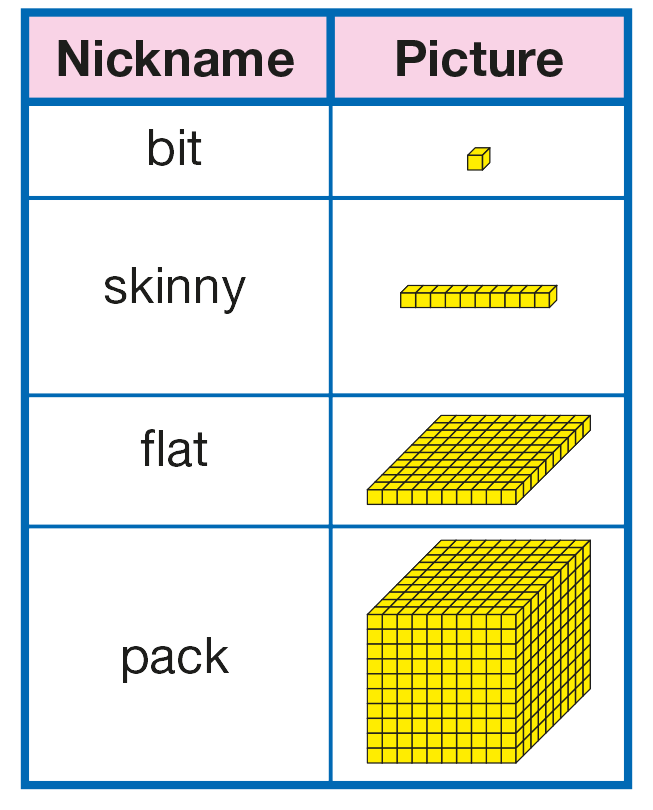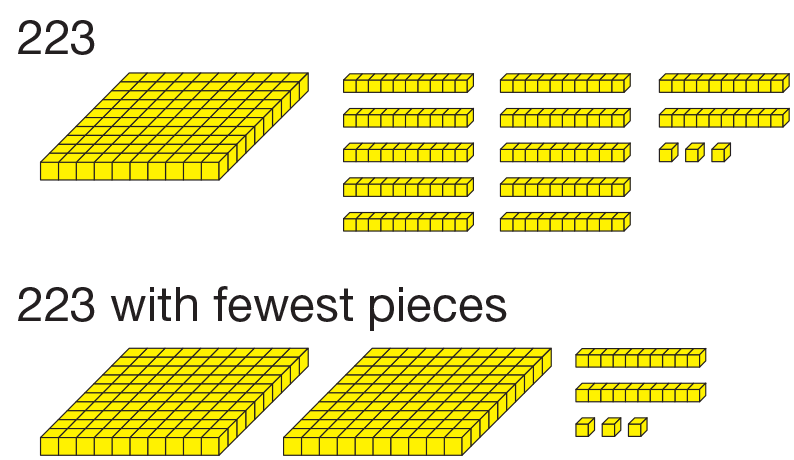Students work in pairs to model numbers using their base-ten pieces. They make trades and determine which representation shows the Fewest Pieces Rule. They make the connection between the Fewest Pieces representation and place value.
Content in this Lesson
- Understanding place value.
- Representing two-digit and three-digit numbers using base-ten pieces and number sentences [E1].
- Composing and decomposing numbers using hundreds, tens, and ones [E2].
- Showing different partitions of numbers using base-ten pieces and number sentences [E3].
- Recognizing that different partitions of a number have the same total (e.g., 50 + 4 = 40 + 14) [E5].
- Finding a strategy [MPE2].
- Checking calcuations [MPE4].
- Showing work [MPE5].
Daily Practice and Problems K–N
Assessment in this Lesson
| Assessment | Expectation Assessed | Math Practices Expectation Assessed |
|---|---|---|
|
How Many with Feedback Box Student Activity Book Pages 291–292 |
|
|
|
DPP Item M Telling Time Teacher Guide - digital |
|



















